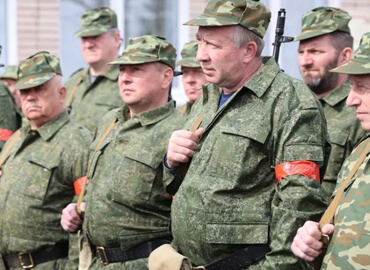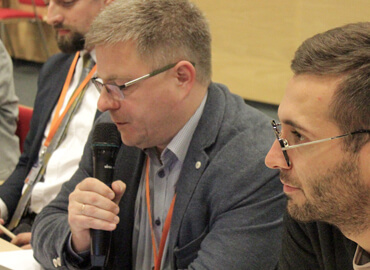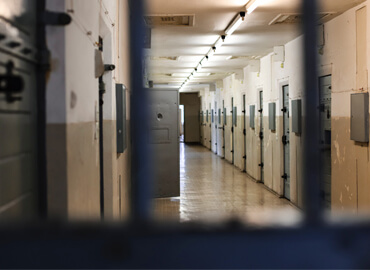Those familiar with theories of representation in sociology are aware of much of the research conducted on the «theatrical» side of politics. In Russian, the word «dramatization» – something played as a performance with the aim of deception – has been fixed with a negative connotation relative to some political events. However, the German Inszenierung is used in media theory generally to refer to many acts of public self-presentation in politics.
From this point of view, the behavior of Alexander Lukashenko during the political crisis is a very interesting case. Lukashenko’s task has been not only to suppress the protest but also to remain in power in such a way as to continually increase the perception of a lack of alternatives among various audiences, even in the face of the loss of his basis for legitimacy.
The protest has been suppressed «institutionally» through the brutal actions of the security forces. And the rest – the political part – Lukashenko turned into an inventive political spectacle.
Every scene in this performance has been very rough, going beyond a joke. It has been a kind of symbiosis of an open-air vulgar theater and a baroque theater of allegories. Each scene has been a primitive illustration of some kind of idea. It has been spontaneous theater. Clearly, Lukashenko has invented all this himself, quickly and driven by instinct. Because of these insane performances («staging»), he simultaneously shocked the audiences that were supposed to be recipients of his «signal» – the people, the Kremlin, the West, civic organizations, the media, and his own circle.
The first staging was the «interception of the discussions on Navalny» presented to Mishustin and then to Putin. The second was the striding about with a machine gun around the presidential palace. The third was the «dialogue with the opposition» in the KGB prison. The fourth was the revealing of the conspiracy to murder him and Kolya. And the fifth was the seizure of the civilian airplane and the arrest of Protasevich.
Each of these episodes were targeted in four directions simultaneously. To the people he demonstrated a complete and frightening irrationality. For example, outside there is a peaceful demonstration of women and for the Telegram channel of his own press service he rushes out with an automatic weapon along the perimeter of the residence, pretending that he is going to stave off an imaginary armed uprising. But this was also a message to the «leading cadres» to all stand to the end. But Putin watched the same scene from his opera box, likely snickering. But at the same time, Putin undoubtedly saw that Lukashenko clearly showed that he is not Yanukovych, and since he will not run anywhere, he should be invested further with political support. The West also watched these scenes. And for this audience Lukashenko played on to Poles and Lithuanians the idea of defending himself to the last bullet.
For each audience, the entire performance was shockingly crude and implausible. But Lukashenko was not at all embarrassed by this, because he was proactive. He acted out these scenes preemptively up to the point where any real danger could occur, thereby cutting off any threat.
It was the same with the «conspiracy.» As is known, unlike the events in Ukraine in 2014, when foreign ministers participated in talks in Kyiv, the West were unable to intervene in the events in Belarus. Political communications were cut off. But Lukashenko needed a performance of Putin’s favorite number: «Orangeism is always instigated from abroad.» And he successfully constructed a «conspiracy» from those very unconvincing elements that were at hand – several opposition members who bought into the provocation of the Belarusian KGB. Lukashenko squeezed everything he could out of this performance, depicting the opposition as total idiots, serving up another of his «you can kill me, I’m ready for this» statements, demonstrating the long arm of the U.S., and successfully making Moscow a part of his fight against this imaginary «conspiracy.» Here Putin could only applaud the ingenuity with which Lukashenko retains power with one broken claw.
The staging of the seizure of the airplane had as its initial idea Putin’s concept of «sovereignty». Since everyone around was talking loudly about the fact that Lukashenko was losing Belarusian sovereignty, he «dramatized» this theme: in the skies of Belarus, only he makes decisions. A sovereign is someone who can make difficult decisions outside the rule of law. Only this kind of leader has unlimited sovereignty. And here Lukashenko demonstrates this.
All these are the most cynical of productions, including a fake bomb warning, a decisive walk with a machine gun without a clip, or ordering Feduta to describe a «transition of power» strategy for stand-in Belarusian generals.
All the explanations that Lukashenko suggested then sounded shockingly eccentric, however the «theater» worked: it intimidated everyone with its irrationality, forced the entire elite to ensure that regardless of how the elections were held and how the protests were suppressed, only Lukashenko could lead the country and that there was no alternative.
And without question he «enlisted» Putin in these productions of his. Putin agreed each time – tacitly or approvingly – with every play, even if citizens with Russian passports suffered (as with the airplane) or when the implausibility of the situation was so laughable – in the interception of conversations about Navalny – that the Russian satirist Maxim Galkin did a bit on it.
Lukashenko’s political system is structured that he could not rely on any institutions to stabilize the situation. At the same time, he was clearly afraid of everything at once – the people and his own circle (during the crisis he was forced to quickly shuffle the leadership of the security forces and change the composition of the Security Council), Putin, Russian oligarchs, and the West. Therefore, he could, just like the Roman emperor Nero, rely only on his ability to improvise performances that allowed for the «replacing of reality.»
He could set fire to Minsk around the city limits to watch it burn from the balcony while declaring that Minsk was set on fire by the Polish Seim or the literary critic Feduta. And he, like Emperor Nero, could pace the balcony and say, «What an artist dies in me!»
And here is what is interesting: at the end of the performance, in the last scene during the May meeting with Putin in Sochi, we saw that Lukashenko somehow acquired a new visual status with Putin. They both played willingly for the cameras – one all in black, the other all in angelic white – the same couple that Putin portrays with Shoigu during his trips to Tuva. In the final scene there was even a sense of friendly intimacy.
The famous sociologist Erving Goffman, who was one of the first to show that theatricalization in politics is present not only in the form of ritual and ceremony, but also in spontaneous mannered self-presentation, would have taken up this «Lukashenko case» with great interest.
Because it is obvious that Lukashenko’s whole «Nero’s theater» about exterminating his own people and introducing his lack of alternatives was conducted through the tools of modern media. He staged all the narratives in this performance: armed defense against an uprising, dialogue with the opposition, a conspiracy against oneself, a fight with the Kremlin against the West, and a fight with the Kremlin for sovereignty. It was a kind of mannerist allegorical theater about what could have been but what was not. And this whole spectacle was played out with social media tools since traditional media no longer reaches the consumer. A terrible performance of a wounded «political animal» who wants to be saved at any cost.
Материал доступен на русском языке: Театр Александра Лукашенко










